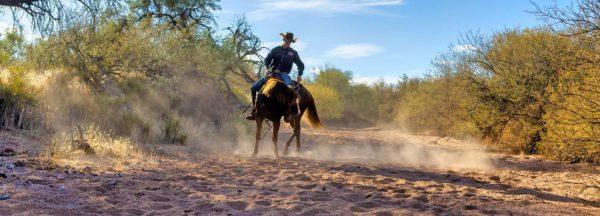Training Tip: Transitions Teach Your Horse to Read Your Seat

If you want your horse to be tuned in to you and be responsive to your cues, get in the habit of practicing transitions. Transitions are asking the horse to stop, slow down or speed up when you cue him to. They simultaneously work on the horse’s gas pedal and brakes and his overall suppleness.
Examples of specific transition exercises in the Method include: One Rein Stops, Bending Transitions, Yield and Bend, Draw to a Stop, and Drive to a Stop. While those are specific transition exercises, you can turn anything into a transition. For example, if you’re out on the trail, you can trot your horse forward, sit down in the saddle to bring him to a walk and then two-track him. Get a few good steps and then trot him off again. How you incorporate transitions into your training sessions is limited only by your ability to get creative.
As you begin to add transitions (or more of them) into your lessons, you’ll notice three key benefits. We covered benefit #1 “Your Horse Will Engage With You” in a previous post.
Benefit #2: Your Horse Will Rate Your Seat
The first transitions we teach our horses following the Method are One Rein Stops. We walk, trot and canter our horses forward and then sit deep in the saddle, slide our hand down one rein and pull it up to our hip to bring the horse to a stop.
With consistent practice, as soon as you sit deep in the saddle, the horse starts to read your body language and stops on his own before you even touch the rein. When I’m training a colt, by his fourteenth ride, he stops and rates the speed he should be going off my seat alone.
Transitions are especially great for hot and impulsive or nervous horses because it gets them rating back to you. With this type of horse, you may do nothing but One Rein Stops, Yield to a Stop and Bending Transitions for three weeks until he starts to listen to you.
When working on transitions with a hotter horse, don’t let him go very far between transitions. The second you feel him starting to go faster than you asked him to go, immediately transition him down. However, be careful that you softly cue him and don’t snatch his head around with the rein or aggressively cue him with your leg because it will make him worried, which will cause him to go even faster. Always pick up softly, and if you need to correct the horse, get more firm with your cues at that point.
Looking for more training tips? Check out the No Worries Club. Have a training question? Send it to us at [email protected].
